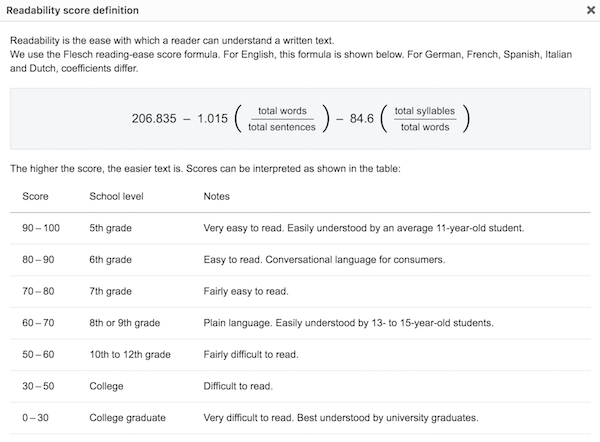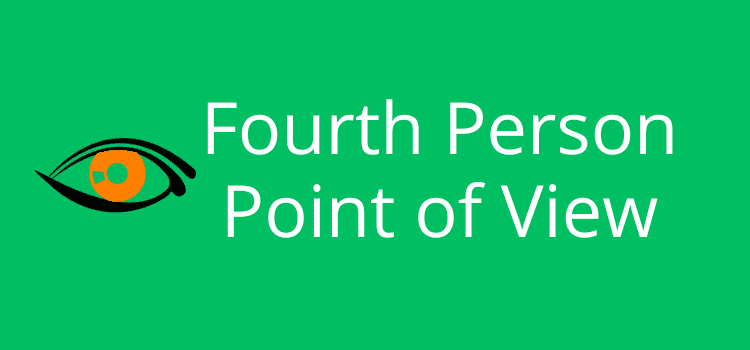
Can you dumb down text so your writing is suitable for an 11-year-old to read and understand?
If your writing isn’t scoring a reading grade down at that level, then perhaps you might want to read on.
There’s a fine line between dumbing down and opening up your writing to a wider online readership.
But the necessity to write for an 11-year-old comes from a surprising source.
You need to dumb down text to succeed on Linkedin
Statistics gathered from analyzing the most successful 3,000 articles published on LinkedIn reveal a startling truth about reading ease scores.
In this article, Why You Need To Start Publishing On LinkedIn, it states in one of its conclusions:
The Flesch-Kincaid Reading Ease test analyses text to determine how difficult the language is to comprehend as written on a scale of 1 – 100.
A score of 30 is considered best understood by university graduates.
Posts on Linkedin with a Flesch-Kincaid Readability Score of 80 – 89 perform best, and requiring the education of an 11-year-old child.
If this grade level standard was being recommended for children’s or young adult books, I could understand.
But this is being suggested to dumb down text for 2,000-word professional articles published on LinkedIn.
It really makes one wonder.

If the LinkedIn audience requires such a low level of writing style, what reading level would be recommended for Instagram or Facebook?
What are the readability scores?
Here is a quick graphic to help you understand the different reading grade levels according to Flesch reading ease.
Readability formulas are not easy to understand.
It is a formula based on the number of syllables per word, the number of words per sentence, and the count of complex sentences.

You can see how simple your writing needs to be to score between 80-89 on the Flesch-Kincaid Grade Level by testing your writing.
Measuring your readability
Many free sites offer the Flesch-Kincaid Reading Ease test.
I used read-able.com for the following analysis on my most recent blog post.
You can see below how well my blog post writing scored on a grade reading level.

As you can see, my grade level score is quite reasonable at 74.6.
However, it is well short of the mark if I want to aim for a score of 80 to 89.
Clearly, I have some dumbing-down work to do on my blog posts before I can target the 11-year-old reader demographic.
However, my writing level might be acceptable for young high school readers.
Readability for fiction
Next, I tested the first chapter of my current book, which is still a work in progress.

You can see that I failed by scoring quite poorly with this text. Luckily, I am not considering publishing this story on LinkedIn.
You might think that these readability tests are a little absurd.
But it did make me wonder about ebooks and, in particular, their popularity with specific demographics.
As a writer, do you take account of your potential reading demographic when you write a book? Do you check your writing grade level?
If you are writing vampire fantasy, for example, it would probably attract teen readers. Maybe it would be a good idea to check your text’s readability grade.
Perhaps it might be a good idea for you to opt for a lower-grade word choice. Should you reduce your sentence length to make it much easier to read?
Would a score of between 60 and 70 be appropriate for your target readers?
If you are publishing self-help books for professional people, should you heed the advice about LinkedIn articles and make them ever so easy to read?
Should you write your career development book or article so that an 11-year-old professional can understand it?
I struggle to believe, in all honesty, that it is such a great idea to dumb down text to this level.
I just can’t bring myself to agree with this idea to dumb down your writing to the lowest possible common denominator for professional writing.
Better ways to access and control your reading grade
But the reading level is an important factor in any form of writing. You need to know your target audience and write accordingly.
The article I mentioned earlier takes it to a ridiculous level.
However, it does raise a valid point about the ease of reading being worthy of consideration when you write.
There are many ways you can measure your writing grade, but there is not much value in a number. You need access to tools and suggestions to help you write at your desired level.
I am lucky to have access to three tools that help me write to a certain reading level.
My first tool is a reading grade recommendation from my SEO management tool.
It calculates an optimum level from my choice of subject and keywords. It also gives me a real-time analysis of my formality level as I write.
As you can see, the recommendation for this article is a reading grade of 63.4 in a somewhat formal tone.


If you are a Prowritingaid user, you can access your readability analysis from the main menu.
It gives you an overall score as well as quick links to problem areas in your text.

For writers who use Grammarly, it also gives you a complete overview of your entire text.

There is no reason for you to use all the tools I have noted above.
But, they do give you an indication of how you can use online tools to analyze your writing.
Then, you can try to find the best reading level for your target reader.
How to dumb down text
You can try using a paraphrasing or AI writing tool, but there is no automatic dumb down a sentence generator that I could find.
The best way to simplify your writing is to manually edit your text. You can shorten your sentences and replace words of more than two syllables.
Look for complex sentences that use commas and split them into individual sentences. Avoid using conditional phrases and adverbs at the start of a sentence.
You should rewrite any passive sentences into the active form.
Another tip is to use the simple present and past simple tenses as much as you can.
One of the easiest tools to use to lower the reading level of a text is the free Hemingway editor.

It gives you a readability grade and highlights areas you can check and improve.
With the tips on the right, rewrite any highlighted hard or very hard-to-read sentences. You can also check for phrases that have simpler alternatives.
Summary
You should always write for your reader, no matter if you are writing books, articles, or blog posts.
There are many factors to consider when you write, and reading ease is one that is quite important.
It is very easy to check your grade and adjust it to your target audience.
It only takes a few minutes to check your level, and it could make all the difference to the quality of your writing.
As a general rule of thumb, you should be aiming at between 60 and 70 for articles and blog posts.
For fiction aimed at adult readers, 50 to 60 might be appropriate.
But if you are writing for younger readers or children, you should pay careful attention to your reading level and adjust it accordingly.
Related reading: How To Simplify Your Writing But Still Sound Intelligent
Share This Article



If your intent is to reach the masses, Dumbing Down writing is key. I’ve been convinced and have been looking for ways to regress my writing style without resorting to slang or ambiguous abbreviations. The issue does not lie with the ability to read at a high level, but rather the ability to digest information quickly and effortlessly. Stumbling over 4 syllable words is not the way to gain readership.
Side note, Harry Potter was written at a 5th-6th grade level. Don’t give too much credit to adults reading YA.
I’m not convinced by the idea that we should write down to our readers. The best writers introduce readers to new words, rather than assuming they have to be spoon-fed with only what they know. I read books as a child that had words in them that I didn’t know. I usually just swept past them and assumed I’d understand from what else was going on. And in general I did.
It’s interesting that one of the most popular ‘children’s’ series of books to come out in recent years, the Harry Potter series, don’t in the least condescend to their readers. Which is why adults enjoy them too, I suspect.
Beyond the age of 11 it is very difficult to decide reading ages a most people do not read at a higher level after that age, although, of course, university students and people exposed to literary works will develop a larger vocabulary.
I believe tabloid papers are supposed to write at a level 11year olds can understand.